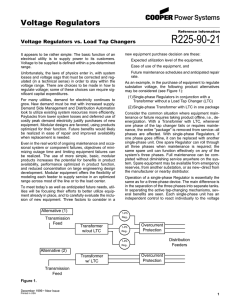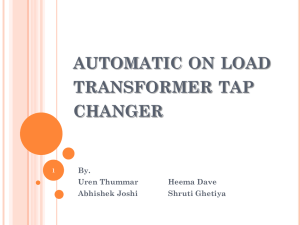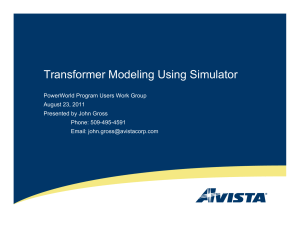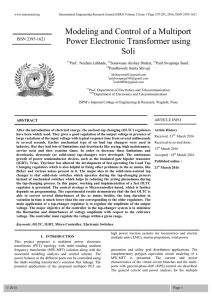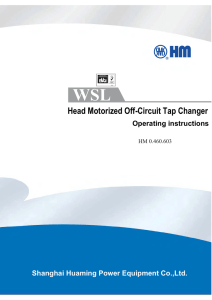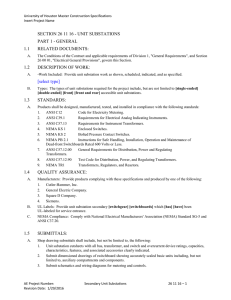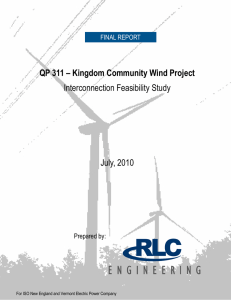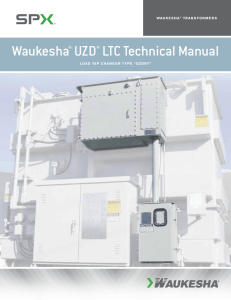V R L T
advertisement
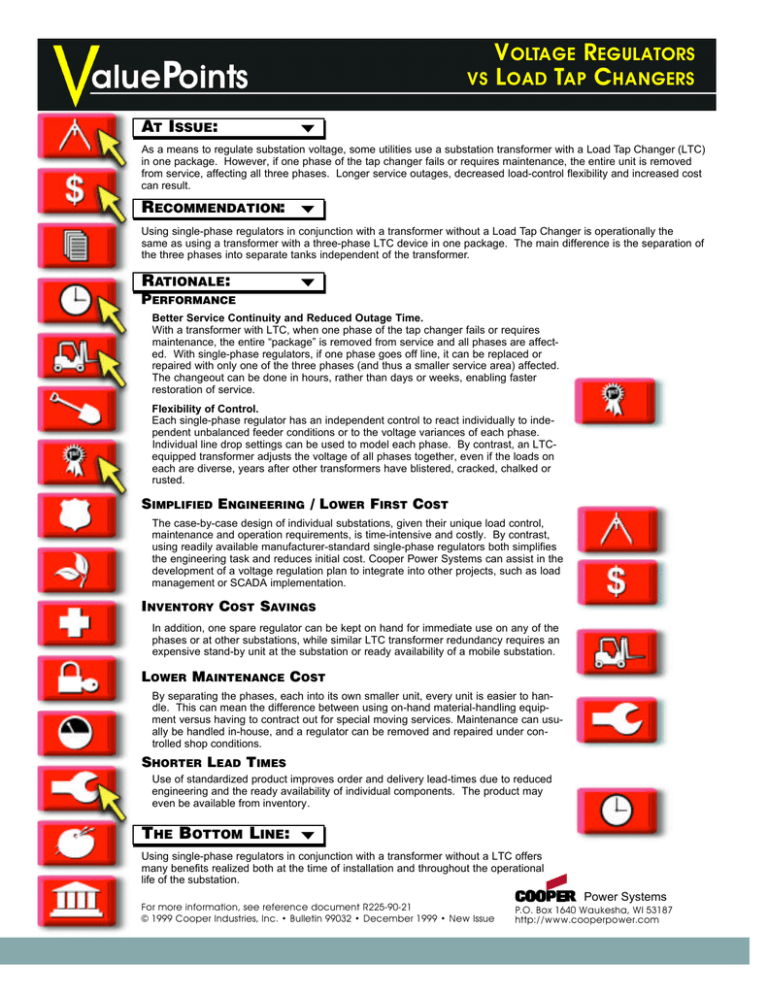
VOLTAGE REGULATORS VS LOAD TAP CHANGERS AT ISSUE: As a means to regulate substation voltage, some utilities use a substation transformer with a Load Tap Changer (LTC) in one package. However, if one phase of the tap changer fails or requires maintenance, the entire unit is removed from service, affecting all three phases. Longer service outages, decreased load-control flexibility and increased cost can result. RECOMMENDATION: Using single-phase regulators in conjunction with a transformer without a Load Tap Changer is operationally the same as using a transformer with a three-phase LTC device in one package. The main difference is the separation of the three phases into separate tanks independent of the transformer. RATIONALE: PERFORMANCE Better Service Continuity and Reduced Outage Time. With a transformer with LTC, when one phase of the tap changer fails or requires maintenance, the entire “package” is removed from service and all phases are affected. With single-phase regulators, if one phase goes off line, it can be replaced or repaired with only one of the three phases (and thus a smaller service area) affected. The changeout can be done in hours, rather than days or weeks, enabling faster restoration of service. Flexibility of Control. Each single-phase regulator has an independent control to react individually to independent unbalanced feeder conditions or to the voltage variances of each phase. Individual line drop settings can be used to model each phase. By contrast, an LTCequipped transformer adjusts the voltage of all phases together, even if the loads on each are diverse, years after other transformers have blistered, cracked, chalked or rusted. SIMPLIFIED ENGINEERING / LOWER FIRST COST The case-by-case design of individual substations, given their unique load control, maintenance and operation requirements, is time-intensive and costly. By contrast, using readily available manufacturer-standard single-phase regulators both simplifies the engineering task and reduces initial cost. Cooper Power Systems can assist in the development of a voltage regulation plan to integrate into other projects, such as load management or SCADA implementation. INVENTORY COST SAVINGS In addition, one spare regulator can be kept on hand for immediate use on any of the phases or at other substations, while similar LTC transformer redundancy requires an expensive stand-by unit at the substation or ready availability of a mobile substation. LOWER MAINTENANCE COST By separating the phases, each into its own smaller unit, every unit is easier to handle. This can mean the difference between using on-hand material-handling equipment versus having to contract out for special moving services. Maintenance can usually be handled in-house, and a regulator can be removed and repaired under controlled shop conditions. SHORTER LEAD TIMES Use of standardized product improves order and delivery lead-times due to reduced engineering and the ready availability of individual components. The product may even be available from inventory. THE BOTTOM LINE: Using single-phase regulators in conjunction with a transformer without a LTC offers many benefits realized both at the time of installation and throughout the operational life of the substation. For more information, see reference document R225-90-21 © 1999 Cooper Industries, Inc. • Bulletin 99032 • December 1999 • New Issue Power Systems P.O. Box 1640 Waukesha, WI 53187 http://www.cooperpower.com
